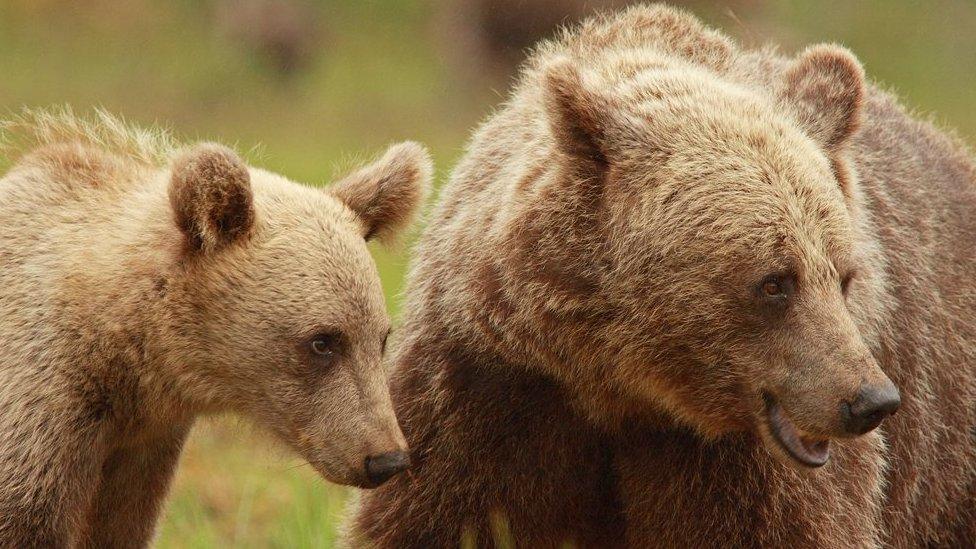Why bear cubs are spending longer with their mothers
- Published

A female Scandinavian brown bear with her cub
Brown bear cubs living in the forests of Sweden are spending longer with their mothers.
Baby bears stay by their mother's side until they are aged two-and-a-half - an extra year compared with a few decades ago, according to a study.
Although the size of the bear population remains stable, hunting pressures appear to be altering the bear's life history, say scientists.
Bears can be legally hunted in Sweden, except when they have cubs.
The shift towards extended care may be due to hunting regulations that protect females with dependent cubs, said Joanie Van de Walle of the University of Sherbrooke in Quebec, Canada.
The longer females stay with their cubs, the more they avoid being killed.
"Because females that care for their cubs longer survive better under the hunting regulation, we say that hunting has a selective effect (it artificially determines which females are going to survive and reproduce based on their reproductive behaviour)," she said.
The cubs follow their mother for several years
If this behaviour is genetically determined (if females caring for cubs longer give birth to females that also care for their cubs longer) then this could lead to evolution in the population, she added.
Researchers analysed data on survival and reproduction in a heavily hunted bear population in the middle of the country.
The mothers have two different strategies for looking after their cubs - either shorter periods, allowing them to breed again the following year, or longer periods, when they have fewer litters.
In the past, Scandinavian bears tended to keep their cubs with them for a year-and-a-half only, and then produce a new litter the following year.
However, in recent years females have shifted towards keeping their cubs by their side for an extra year.
"Our hypothesis was thus that hunting regulation could favour longer maternal care in this population," said Joanie Van de Walle.
"Therefore, the observed change in female reproductive behaviour could be the result of the increasing hunting pressure in the population."
Survival rate
Swedish bear hunts are seen as sustainable, with bear numbers remaining at a stable level.
The females have fewer breeding opportunities if they keep their cubs for longer, but this cost is outweighed by a higher survival rate of mother and cubs.
The researchers, who report their findings in the journal , say it is important to understand the consequences of human actions on wildlife populations.
For instance, hunting could alter the structure of the bear population, leading to a larger proportion of reproductive females.
"Although we did not find that a change in female reproductive behaviour could affect population growth rate, we show that it can affect other parameters of the population," said Joanie Van de Walle.
There is potential for human pressures to shape evolutionary processes in a range of animals.
For example, trophy hunting can remove individuals with large horns, tusks, or antlers from a population, pushing endangered animals closer to extinction.
Follow Helen .